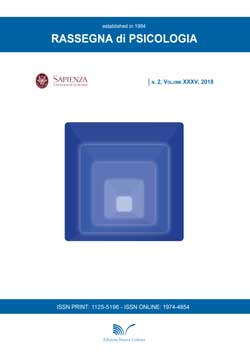The Italian Version of the Alexithymia Questionnaire for Children (AQC): factor structure and reliability
DOI:
https://doi.org/10.13133/1974-4854/16690Keywords:
alexithymia, children and pre-adolescent, invariance, Italian populationAbstract
The aims of the study were to investigate factor structure and reliability of the Alexithymia Questionnaire for Children (AQC), originally validated by Rieffe et al. (2006), on an Italian population. A total sample of 1265 participants, ranging in age from 8 to 14 years, filled in the Italian version of the AQC and 160 children also completed the Youth Self Report (YSR), during school time. A sub-sample (N = 60) was retested after eight weeks for an assessment of the measure’s stability. The three-factor model reported good fit indices on the total sample, even though not all items loading on the Externally Oriented Thinking (EOT) factor appeared statistically relevant. Moreover, the model was only partially invariant across gender and age groups: analysis indicated developmental gender-specific differences on Difficulty Identifying Feelings (DIF) and EOT factors. Significant correlations were found between AQC scores and the YSR internalizing and externalizing symptomatology scales. In conclusion, the three-factor model was confirmed and some evidence emerged concerning its generalization to gender and age-groups.Downloads
Published
2018-06-28
Issue
Section
Articles
License
Copyright (c) 2018 Michela Di Trani, Fabio Presaghi, Alessia Renzi, Paul Samuel Greenman, Luigi Solano

This work is licensed under a Creative Commons Attribution 4.0 International License.

